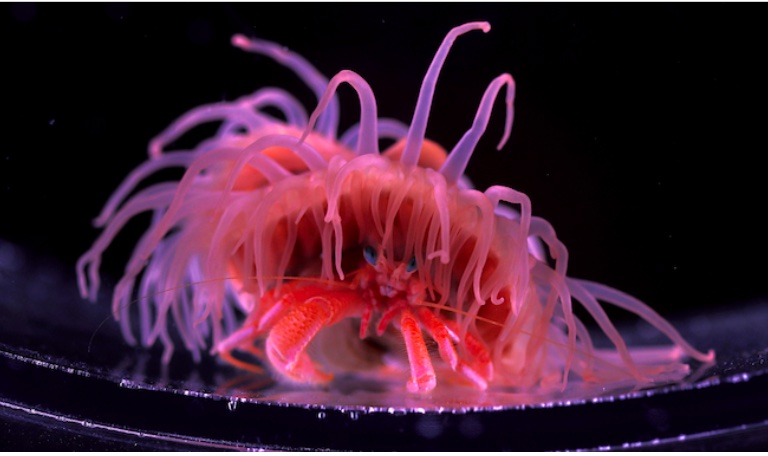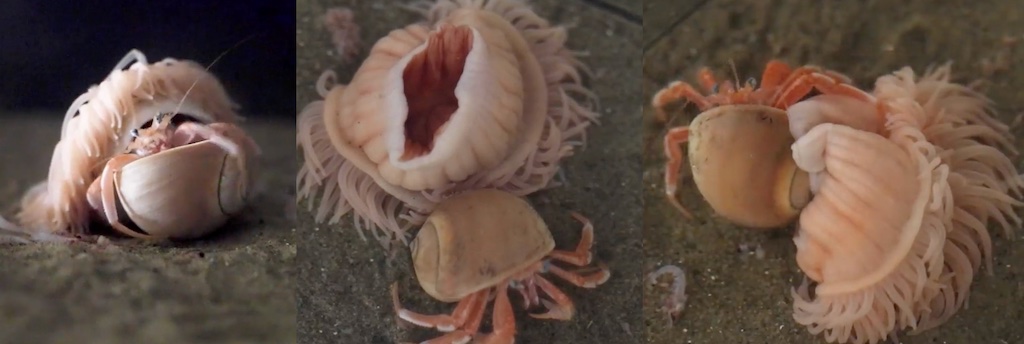From - Mongabay For Kids,
Edited by - Amal Udawatta,
This hermit crab dresses itself in style – with an anemone coat! Meet the newly described anemone that scientists have named Stylobates calcifer:
This anemone is a little different than the ones you can find in a tide pool. It is found on the deep-sea floor, off the coast of Japan. And it lives on the back of a host – a hermit crab called Pagurodofleinia doederleini.
Hermit crabs use empty mollusk shells as a sort of shelter. The shell protects their soft abdomen. If a hermit crab outgrows its shell, it will search for a new, bigger shell to carry around.
Of the more than 800 species of hermit crabs, at least 35 species carry anemones on their shells. Scientists think that this relationship helps both the crab and the anemone in some way – this is called a mutualism.
Being on the back of the hermit crab may help the anemone access small particles of food. And the anemone may help the crab in several ways. Some anemones create a structure called a carcinoecium that “grows” the shell that the crab occupies. Anemones may also protect hermit crabs from predators or other pests.




Comments
Post a Comment